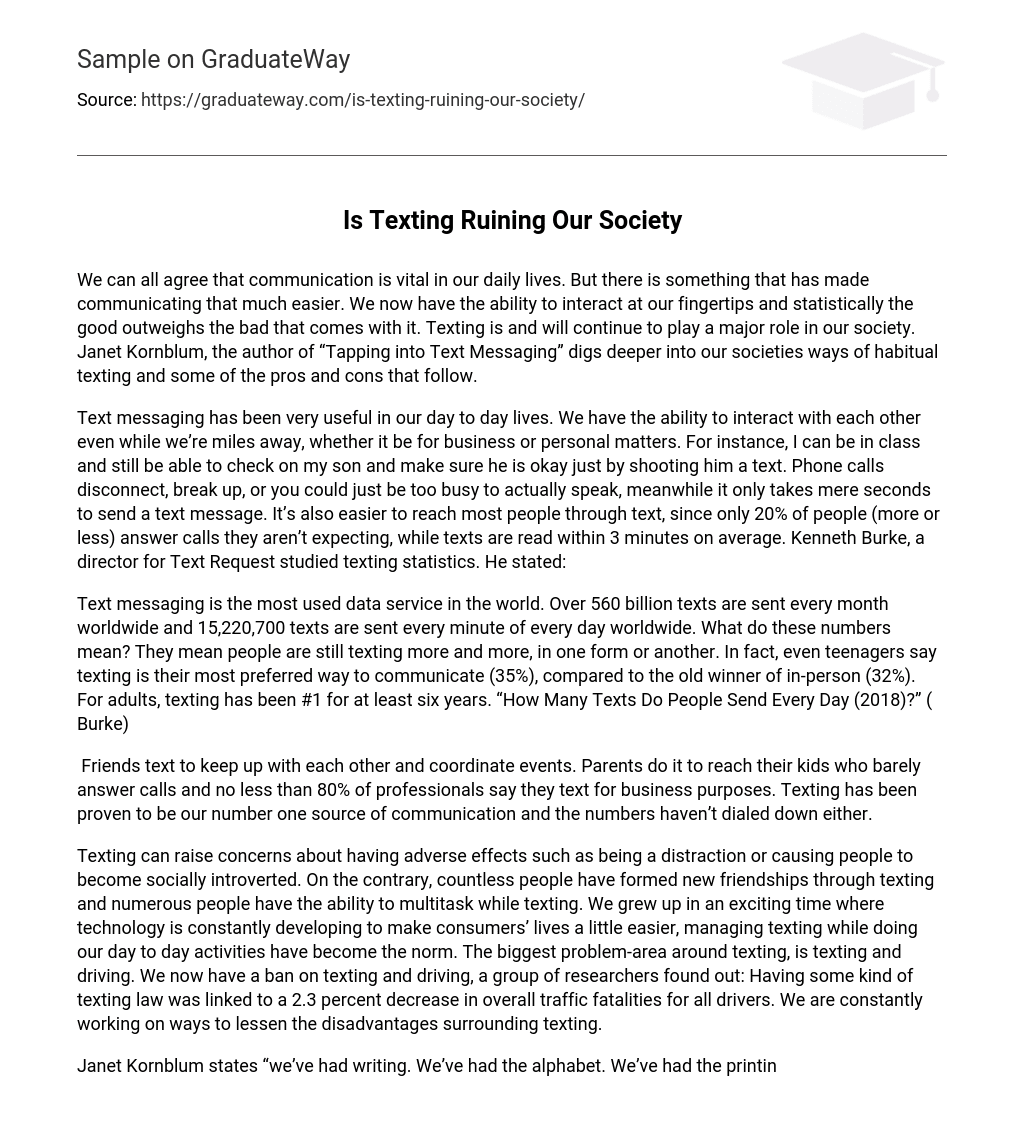We can all agree that communication is vital in our daily lives. But there is something that has made communicating that much easier. We now have the ability to interact at our fingertips and statistically the good outweighs the bad that comes with it. Texting is and will continue to play a major role in our society. Janet Kornblum, the author of “Tapping into Text Messaging” digs deeper into our societies ways of habitual texting and some of the pros and cons that follow.
Text messaging has been very useful in our day to day lives. We have the ability to interact with each other even while we’re miles away, whether it be for business or personal matters. For instance, I can be in class and still be able to check on my son and make sure he is okay just by shooting him a text. Phone calls disconnect, break up, or you could just be too busy to actually speak, meanwhile it only takes mere seconds to send a text message. It’s also easier to reach most people through text, since only 20% of people (more or less) answer calls they aren’t expecting, while texts are read within 3 minutes on average. Kenneth Burke, a director for Text Request studied texting statistics. He stated:
Text messaging is the most used data service in the world. Over 560 billion texts are sent every month worldwide and 15,220,700 texts are sent every minute of every day worldwide. What do these numbers mean? They mean people are still texting more and more, in one form or another. In fact, even teenagers say texting is their most preferred way to communicate (35%), compared to the old winner of in-person (32%). For adults, texting has been #1 for at least six years. “How Many Texts Do People Send Every Day (2018)?” ( Burke)
Friends text to keep up with each other and coordinate events. Parents do it to reach their kids who barely answer calls and no less than 80% of professionals say they text for business purposes. Texting has been proven to be our number one source of communication and the numbers haven’t dialed down either.
Texting can raise concerns about having adverse effects such as being a distraction or causing people to become socially introverted. On the contrary, countless people have formed new friendships through texting and numerous people have the ability to multitask while texting. We grew up in an exciting time where technology is constantly developing to make consumers’ lives a little easier, managing texting while doing our day to day activities have become the norm. The biggest problem-area around texting, is texting and driving. We now have a ban on texting and driving, a group of researchers found out: Having some kind of texting law was linked to a 2.3 percent decrease in overall traffic fatalities for all drivers. We are constantly working on ways to lessen the disadvantages surrounding texting.
Janet Kornblum states “we’ve had writing. We’ve had the alphabet. We’ve had the printing press. These are technologies for extending the way we think and communicate.” (p.367) No matter the aversions anyone has towards texting, we can’t deny the impact on convenience it has made for communication. Although phone calls aren’t dying out anytime soon, texting has remained our top source for communicating and I believe it will remain so.





